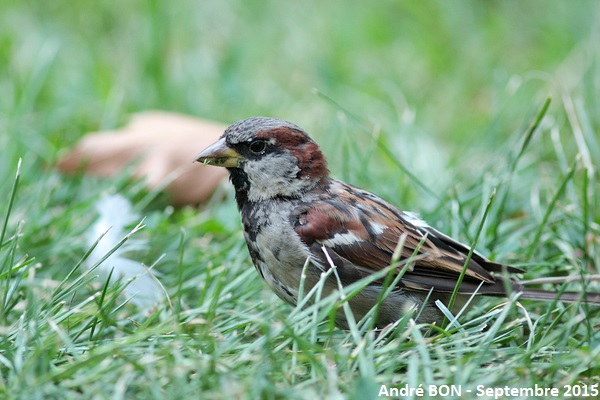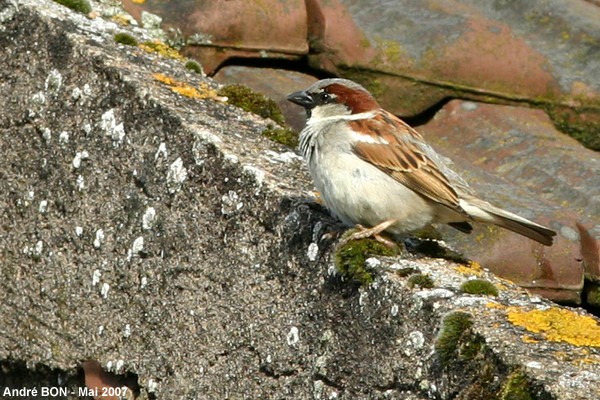



| House Sparrow (Passer domesticus (Linnaeus, 1758)) |




|
|
Scientific name: Passer domesticus (Linnaeus, 1758) Common name: House Sparrow French name: Moineau domestique Order: Passeriformes Family: Passeridae Size: Body size : 15 cm; Wingspan : 25 cm; Weight : 30 g Habitat: The House Sparrow lives near human buildings. It is missing in forests, meadows and deserts. Food: The House Sparrow often feeds in group where some birds keep a watch on the surroundings to raise an alert in case of predators. It usually feeds on the ground, on seeds, insects, larvae, spiders and ground worms. It may also attack fruits and buds and so it is considered as a pest. Nesting: The nest is mainly built with straw and dead leaves. It is located high, under a roof, under a street light, hidden behind ivy covering a wall, etc. There are up to 4 broods of 3 to 8 eggs per year. Migration: Sedentary. They can form large flocks in autumn or in winter. Geographic area: Originated from Eurasia, the House Sparrow has been introduced everywhere in the world. It is only missing in the polar areas. |
Male House Sparrows have a grey cap bordered by brown. The cheeks and the sides of the neck are white. There is a black stripe on the eyes. Males' throat is black and extends as a black bib on the chest. The upper side is brown with black lines, the under side is paler. The greyish black beak is conical. Females and juveniles are a duller colour than males. |
| [To know more about the House Sparrow] [Next picture] [Top] |

|
The birds of Central Park, used to the many people passing by, are not very shy. The contrasted colours and the black bib that extends over the chest indicate a male. |
| [To know more about the House Sparrow] [Next picture] [Previous picture] [Top] |

|
Something tells me that there is a nest under construction … |
| [To know more about the House Sparrow] [Next picture] [Previous picture] [Top] |

|
House Sparrows, so numerous in the past, do not visit my garden anymore. So I have to take pictures when I travel to other places. |
| [To know more about the House Sparrow] [Previous picture] [Top] |

|
The gutter is a quiet place. You can safely perch on it and find something to drink. |